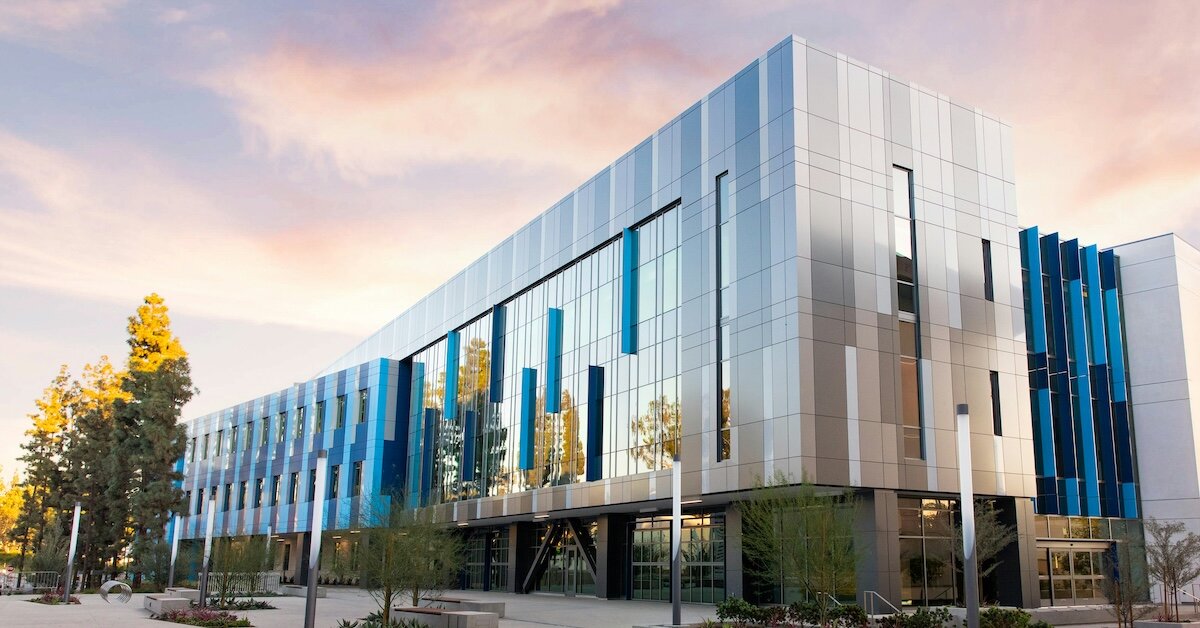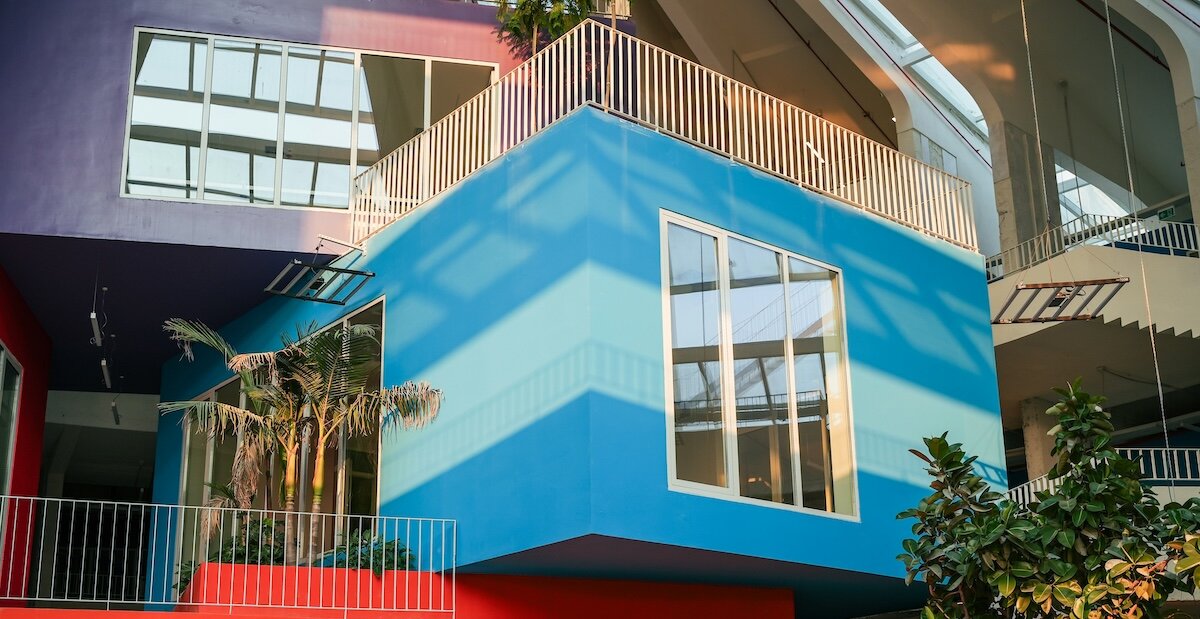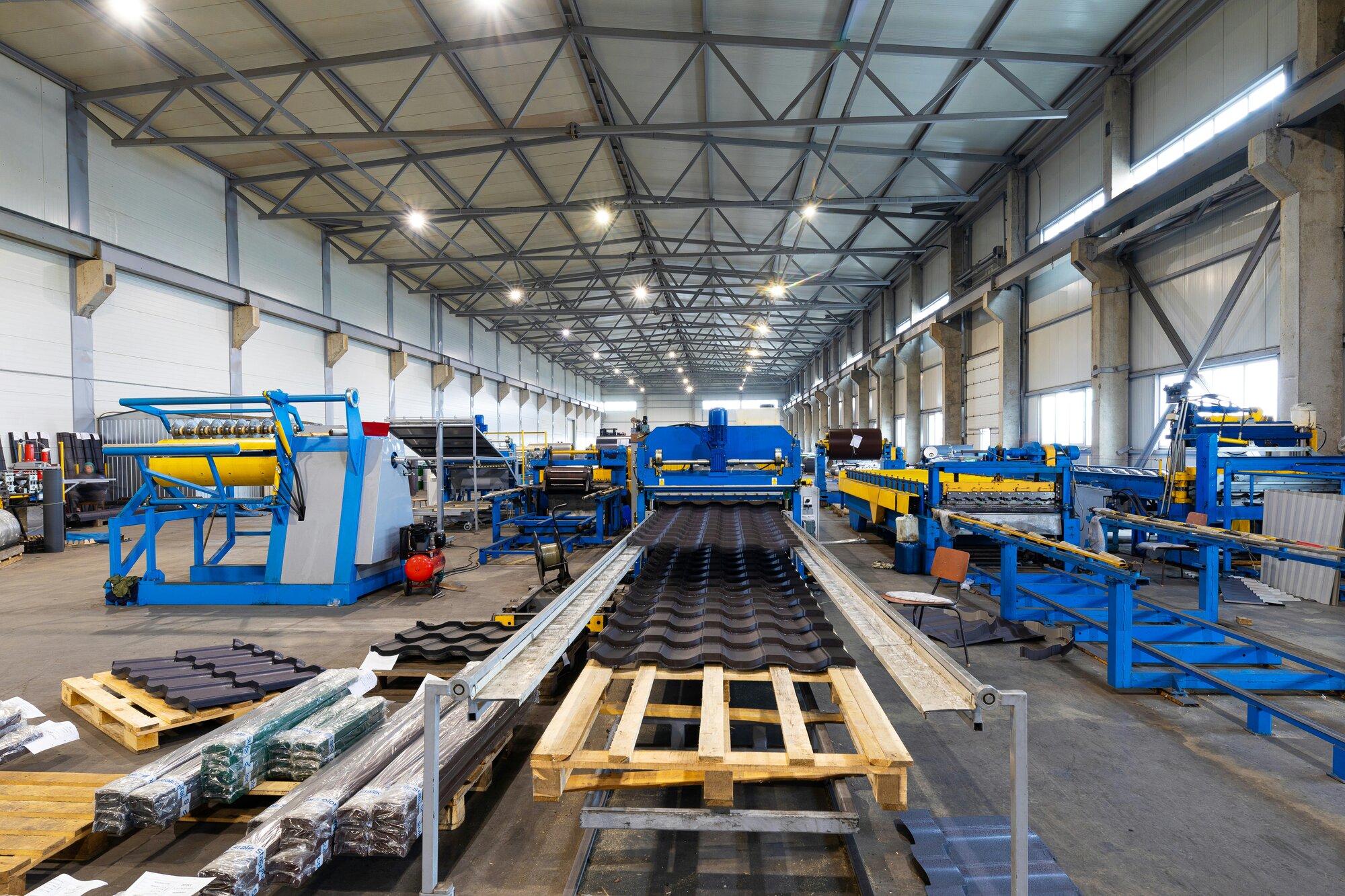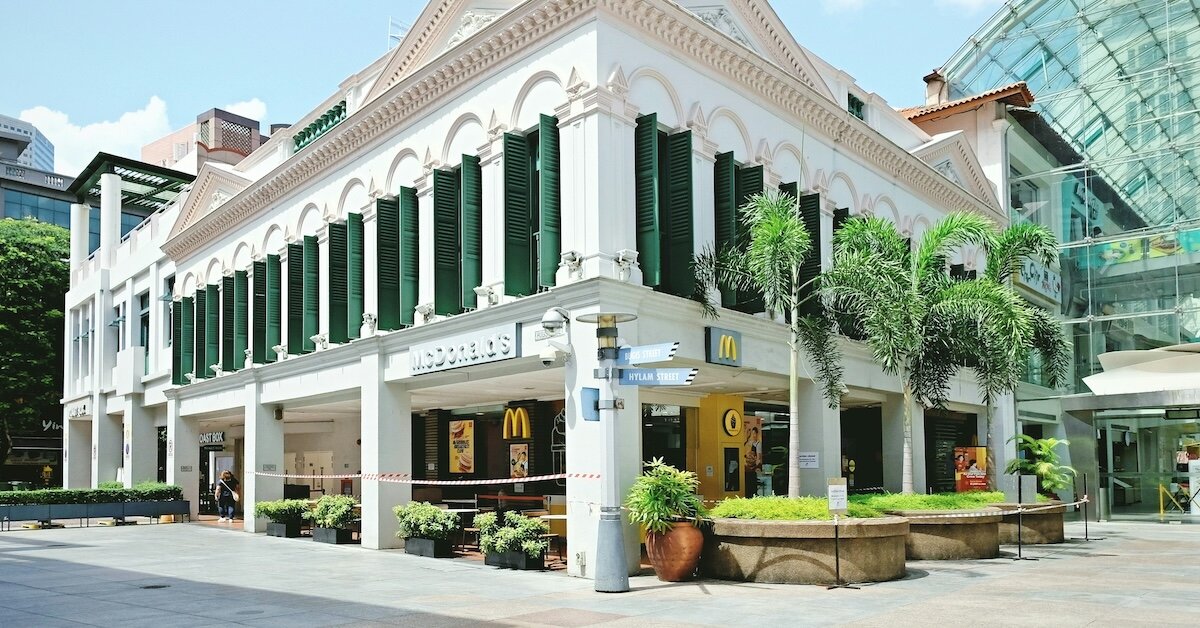Types of Commercial Real Estate: Retail, Office, Industrial, and Multifamily


Commercial real estate (CRE) plays a vital role in the economy, shaping the places where we work, shop, live, and invest. As one of the most valuable asset classes in the U.S. - worth an estimated $26.8 trillion - CRE offers investors diverse opportunities, from high-rise office buildings to sprawling industrial parks and bustling retail centers.
Whether you’re a seasoned investor or just beginning to explore commercial property, understanding the different types of commercial real estate is key to making informed decisions. Each asset class carries unique benefits, risks, and investment potential.
In this guide, we’ll break down the key commercial real estate property types, their classifications, and the factors that make each an attractive investment in today’s market.
Understanding Commercial Real Estate Property Types & Classifications
Commercial real estate (CRE) encompasses a wide range of properties designed for business, investment, and income generation. From bustling office buildings and sprawling industrial warehouses to vibrant retail centers and mixed-use developments, commercial real estate plays a vital role in shaping communities and driving economic growth. Each property type offers unique opportunities and challenges, depending on location, market demand, and economic trends.

What are the Different Types of Commercial Real Estate?
With a solid understanding of the different types of commercial real estate, investors and businesses can make informed decisions on acquisitions, development projects, and leasing strategies. Whether it’s securing office space, expanding a retail portfolio, or investing in industrial assets, knowing the nuances of each property type is essential for long-term success in the CRE market.
Office Space
Office buildings serve as business hubs, providing spaces for companies of all sizes. These properties are often classified based on quality, amenities, and location making it essential for investors to choose markets with strong demand and long-term growth potential:
- Class A: Premium office buildings with high-end finishes, prime locations, and top-tier amenities. These properties command the highest rents and attract corporate tenants.
- Class B: Mid-tier office spaces with functional layouts and decent locations, often sought after for value-add investment opportunities.
- Class C: Older buildings with basic amenities, lower rental rates, and potential for redevelopment.
Common office property types include:
- Central Business District (CBD) Offices: Located in the heart of major cities, these high-rise office buildings house corporate headquarters, law firms, and financial institutions.
- Suburban Office Business Parks: Clusters of office buildings located outside central business districts, often offering lower rents and more green space.
- Creative/Loft Spaces: Open-concept office environments in repurposed buildings, popular with startups and creative industries.
- General Purpose Office Buildings: Standard office spaces that can accommodate a variety of business types, from law firms to marketing agencies.
- Research and Development (R&D) Facilities: Specialized office and lab spaces tailored for technology, life sciences, and product development firms.
- Medical Office Buildings (MOBs): Designed for healthcare providers, from private practices to outpatient facilities.
- Coworking Spaces: Flexible, shared office environments catering to freelancers, startups, and remote workers.

Industrial Properties
Industrial real estate has seen surging demand, particularly with the growth of e-commerce and logistics. These properties serve as storage, distribution, and manufacturing hubs, playing a crucial role in the larger economy, making them a sought-after class for investors.
Key industrial real estate property types include:
- Industrial Business Parks: Clusters of industrial facilities designed for multiple tenants, often with shared infrastructure and flexible leasing arrangements.
- Warehouses & Distribution Centers: Large facilities used for storing and shipping goods, often located near major transportation corridors.
- Flex Industrial Space: Combines warehouse and office components, offering adaptable space for various business needs.
- Manufacturing Facilities: Heavy and light manufacturing spaces tailored for production, processing, and assembly operations.
- Processing Plants: Facilities that refine and process raw materials, including those utilized for food processing, mineral processing, oil refineries, and solid waste management and recycling.
- Research & Development (R&D) Centers: Spaces dedicated to innovation, prototyping, and scientific research across various industries.
- Communication & Data Centers: High-security properties housing cloud storage, IT infrastructure, and telecommunications networks.
- Self-Storage Facilities: Industrial properties that provide personal and business storage units for rent.
- Truck Terminals & Cross-Docking Facilities: Short-term storage spaces used for logistics and freight transfer, optimizing transportation efficiency.

Retail Properties
Retail real estate consists of spaces where businesses sell goods and services directly to consumers, generating revenue through tenant lease agreements. These types of commercial real estate property vary in size, tenant mix, and location:
- Street Retail & Storefronts: Standalone retail spaces in high-visibility locations, including boutique shops, pharmacies, and banks.
- Convenience Stores & Service-Based Retail: Small, high-traffic locations selling essential goods and services, such as gas stations, laundromats, dry cleaners, and day care facilities.
- Restaurants & Bars: Includes quick-service restaurants (QSRs), fast-casual dining, full-service restaurants, coffee shops, and bars.
- Automotive Retail: Properties tailored for vehicle sales and services, including dealerships, tire and auto repair shops, car washes, and gas stations.
- Strip Centers: Small clusters of retail units, often anchored by convenience-based tenants like nail salons, takeout restaurants, and local service providers.
- Neighborhood & Community Shopping Centers: Medium-sized retail hubs serving local communities, often anchored by grocery stores, fitness centers, and pharmacies.
- Regional & Super-Regional Shopping Malls: Large retail destinations featuring department stores, fashion retailers, entertainment venues, and food courts.
- Specialty Retail Centers: Unique shopping destinations designed around a theme, including outlet malls, luxury retail centers, and lifestyle centers.

Multifamily Real Estate
Even though multifamily properties primarily serve as residential housing, they are considered commercial real estate when consisting of five or more units. Investors often target this asset class for its outstanding long-term income potential:
- Apartment Complexes: Low-rise, mid-rise, and high-rise buildings catering to renters in urban and suburban markets.
- Student Housing: Purpose-built or converted properties near universities, leased to college students.
- Senior Living Communities: Independent living, assisted living, and skilled nursing facilities serving aging populations.
- Group Housing: Residential facilities designed for specific populations, such as transitional housing, rehabilitation centers, and co-living spaces for individuals with disabilities or special needs.
Hospitality and Hotel Properties
The hospitality sector includes a variety of properties catering to travelers, tourists, and business professionals. These types of CRE properties can range from budget accommodations to luxury resorts, differing in service levels, amenities, and target clientele:
- Full-Service & Luxury Hotels: High-end properties offering extensive amenities, including on-site restaurants, concierge services, and premium accommodations. Examples include resorts, spas, and casino hotels.
- Limited-Service & Economy Hotels: Budget-friendly options that provide essential accommodations without full-service amenities. This category includes economy motels and select-service hotels with fewer on-site features.
- Extended Stay & All-Suite Hotels: Designed for longer stays, offering in-room kitchens, laundry facilities, and home-like amenities. Ideal for business travelers, relocating families, and long-term guests.
- Convention & Business Hotels: Hotels featuring large meeting spaces, conference facilities, and corporate amenities, often located near major business districts or convention centers.
- Boutique & Specialty Lodging: Unique, smaller-scale accommodations like bed and breakfasts, boutique hotels, and themed properties that offer personalized experiences in distinct settings.

Mixed-Use Developments
Mixed-use real estate combines two or more property types within a single development, often creating vibrant, walkable communities. These projects can enhance urban environments and boost property value.
Common mixed-use property types include:
- Retail + Office Spaces: Commercial centers with offices above ground-floor shopping and dining.
- Residential + Commercial Blends: High-rise buildings featuring apartments, condos, and retail or entertainment spaces.
Special Purpose & Land
Certain properties fall into special purpose commercial real estate categories due to their unique uses and zoning classifications:
- Self-Storage Facilities: Secure, rentable units for personal and business storage needs.
- Parking Garages & Lots: Structured or surface parking solutions in high-density urban areas.
- Sports & Entertainment Venues: Stadiums, concert halls, and theme parks built for events and attractions.
- Undeveloped Land: Raw land designated for future development, often classified as agricultural, commercial, or residential.

Investing in Different Types of Commercial Real Estate
Commercial real estate offers diverse investment opportunities, each with unique benefits, challenges, and market dynamics. The right investment strategy depends on factors such as risk tolerance, market conditions, and long-term financial goals.
Let’s examine how different property types impact investors and what to consider when evaluating opportunities.
Office and Industrial Investment Trends
The office and industrial sectors present distinct investment prospects shaped by evolving business needs and economic conditions.
- Office Investments: Traditional office spaces have faced headwinds in recent years due to shifts toward hybrid and remote work. However, well-located Class A office buildings and medical office properties continue to attract stable tenants. Investors are focusing on suburban office parks, flexible coworking spaces, and buildings with modern amenities to meet changing workforce demands.
- Industrial Investments: Industrial real estate remains a top-performing asset class, fueled by demand for warehouse and distribution centers, cold storage, and last-mile logistics facilities. With e-commerce growth driving tenant demand, markets near major transportation hubs offer strong rent appreciation and long-term stability.
Retail and Multifamily Investment Considerations
Retail and multifamily properties serve different tenant needs but share an important commonality - both sectors are closely tied to consumer behavior and local economic conditions.
- Retail Investments: The retail landscape has adapted in response to e-commerce, with experiential retail, grocery-anchored shopping centers, and well-located strip malls maintaining steady demand. Investors targeting retail assets prioritize long-term lease agreements with strong national and regional tenants for income stability.
- Multifamily Investments: Multifamily properties continue to be one of the most resilient commercial real estate asset classes, offering consistent cash flow and relatively low vacancy rates. High-demand locations, such as growing Sun Belt cities and suburban markets, attract renters seeking affordability and amenities. Investors can also consider Class A luxury apartments, workforce housing, and student housing to diversify risk and yield potential.
Special Purpose and Mixed-Use Opportunities
Beyond traditional asset classes, special-purpose properties and mixed-use developments offer niche investment opportunities that cater to specific market needs.
- Special Purpose Properties: Self-storage facilities, data centers, and healthcare real estate have gained popularity due to strong tenant demand and specialized revenue models. While these assets may require higher upfront costs, they can offer stable income streams and reduced competition.
- Mixed-Use Developments: Properties combining residential, office, and retail elements continue to thrive in urban and high-foot-traffic areas. These investments benefit from diversified income sources, making them more resilient to market fluctuations than single-use properties.

How Commercial Real Estate Property Types Affect Risk & Return
Every commercial real estate sector carries different levels of risk and return, influenced by tenant stability, lease structures, and economic trends.
- Low-risk, stable returns: Industrial, multifamily, and grocery-anchored retail centers tend to provide predictable cash flow due to long lease terms and sustained demand.
- Moderate risk, strong upside potential: Office, mixed-use, and well-located retail assets can generate high returns, but investors must navigate tenant turnover and market cycles.
- Higher risk, specialized markets: Hospitality, entertainment venues, and special-purpose properties may experience volatility but can deliver significant returns in the right locations.
Understanding these dynamics helps investors build balanced, diversified portfolios that align with their financial goals.
Find Your Next Commercial Real Estate Investment
Commercial real estate offers diverse opportunities for investors, whether you're seeking office space, industrial properties, multifamily assets, or retail developments - and knowing the unique advantages of different CRE property types is the key to making informed, strategic decisions.
Ready to explore available listings? Browse Crexi to find and evaluate top commercial properties that align with your investment goals.









